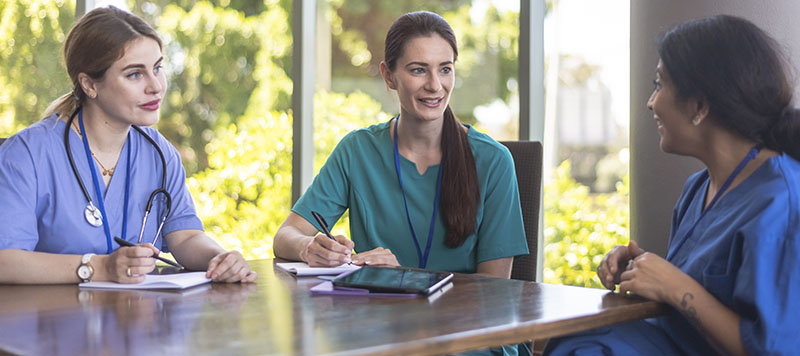Maximising your in-service education with End-of-Life Essentials
1897 0
A blog post written by Deb Rawlings, Co-Investigator, End-of-Life Essentials project

Healthcare professionals who work in a hospital are likely to encounter patients who are at the end of life (EOL). Patients may be assessed and cared for during an admission on a ward or unit, or at a presentation to the emergency department. This admission could be their first, one in a series of admissions, or it may be their last.
By current estimates over 50% of Australians are expected to die in hospital [1], but unfortunately care can be suboptimal [2]. Healthcare professionals in hospitals need to be skilled and educated in EOL care for the needs of the patient to be met and care to be improved. Not only is continuing professional development (CPD) through training a requirement of ongoing professional registration, but it can also upskill staff and provide evidence in the quality assurance mechanism in assessment to the National Safety and Quality Health Service (NSQHS) Standards.
Maintaining a capable workforce or team of professionals requires training and quality training materials. End-of-Life Essentials (EOLE) offers free peer-reviewed online education modules on end of life in acute hospitals for nurses, doctors, and allied health professionals.
Resources for educators
Recently, EOLE has expanded to make available a variety of resources for educators to use in teaching sessions, or as standalone points of discussion or reflection.
Some of these resources include:
- PDF documents summarizing the education modules.
- Clinical videos covering various aspects of end-of-life care such as states of mind, patient-centered communication, and self-care.
- Toolkits with resources and action checklists by topic.
- Blog series on various topics related to end-of-life care in hospitals.
- Accreditation essentials for providing information on end-of-life care requirements for hospital accreditation.
The resources are designed for educators to adapt and adopt for different educational sessions to enhance online learning, or face to face sessions, or a blended approach. The EOLE suite of education resources are designed specifically for short and targeted in-service education sessions. These resources are freely available to be adopted and used and can be accessed via the ‘Training Resources’ section of the EOLE website.
EOLE provides healthcare professionals with a wealth of resources to use in their in-service education, with the flexibility to use these resources in a variety of ways. Some examples of how you can use EOLE resources in these types of sessions include:
- Small learning groups to work towards individualized professional learning goals.
- Using a PowerPoint presentation with seminar notes to prompt interaction and deeper learning.
- Breaking a larger group into smaller groups to discuss different aspects of end-of-life care.
- Briefly discussing a reflection point with a group.
Following is a testimonial from an End-of-Life Care Nurse Practitioner at John Hunter Hospital in NSW:
‘I wish that these resources had been available to me when I started this job, as trying to learn what to teach and how to teach it has been such an enormous challenge in the acute care environment. I really look forward to sharing the resources with our education teams and Nursing Unit Managers and thinking about how we can improve this.’ Jeanette Lacey, Lecturer, School of Medicine and Public Health, University of Newcastle.
References
- Mitchell I, Lacey J, Anstey M, Corbett C, Douglas C, Drummond D, Hensley M, et al. Understanding end-of-life care in Australian hospitals. Aust Health Rev. 2021 Jun 2. doi: 10.1071/AH20223.
- Devery K, Yin H, Rawlings D. End-of-Life Essentials education modules: a quality and safety initiative to improve health professionals end-of-life care knowledge, skills, attitude and confidence. BMJ Open Quality 2022;11:e001925. doi:10.1136/bmjoq-2022-001925.

Deb Rawlings, Co-Investigator, End-of-Life Essentials project